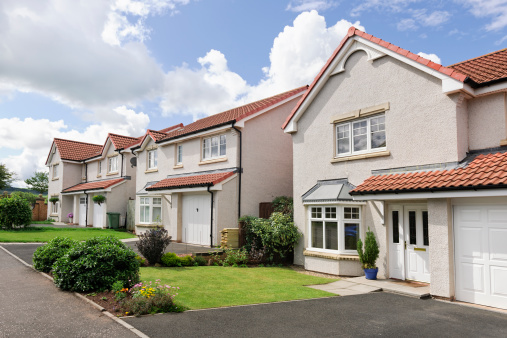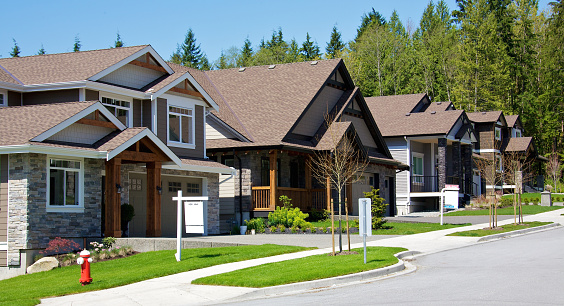The Growing Popularity of Single-Family Rentals and Build-to-Rent Communities
Single-family rentals (SFR) are rapidly growing in popularity due to emerging trends as demand surges among tenants who live in them and institutional investors who are funding the asset class’s growth.
Homes in suburban markets with private driveways and yards have been historically owner-occupied, but following a wave of foreclosures caused by the Great Recession in 2008, these homes were purchased at steep discounts and then rented out as investments.
Between 2006 and 2016, more than 3.8 million additional households became renters of single-family homes, according to the Terner Center for Housing Innovation at the University of California, Berkeley, an increase of 34% to approximately 15 million households. The COVID-19 pandemic further increased the demand for SFRs as it created a need for more privacy, and space to work or learn from home. Noticing the trend, institutional real estate investors contributed at least $21 billion into the industry between March 2020 and June 2021 alone, according to John Burns Real Estate Consulting.
 Amidst the growing shift in demand for rental homes, institutional investors have been creating new supply with build-to-rent (BTR) communities. BTRs are not simply single-family rental homes scattered among suburban neighborhoods, but rather are purpose-driven developments of dozens, or even hundreds, of individual rental housing units. Given their sheer scale, BTRs are almost exclusively associated with institutional investors, and to keep up with the demand, operators have contracted with traditional home building companies to acquire their newly constructed residential developments. In fact, in 2020, these builders have added 226,000 single-family rentals to the residential market, on top of the 219,000 added in 2019 and 216,000 added in 2018, according to the U.S. Census Bureau.
Amidst the growing shift in demand for rental homes, institutional investors have been creating new supply with build-to-rent (BTR) communities. BTRs are not simply single-family rental homes scattered among suburban neighborhoods, but rather are purpose-driven developments of dozens, or even hundreds, of individual rental housing units. Given their sheer scale, BTRs are almost exclusively associated with institutional investors, and to keep up with the demand, operators have contracted with traditional home building companies to acquire their newly constructed residential developments. In fact, in 2020, these builders have added 226,000 single-family rentals to the residential market, on top of the 219,000 added in 2019 and 216,000 added in 2018, according to the U.S. Census Bureau.
Despite all this new activity, the SFR industry represents a huge opportunity for institutional investors as they only own 2.3% of the market, while 72.5% of the market is dominated by non-institutional investors.
Why Tenants Choose Single-Family Rentals and Build-to-Rent Communities
SFR and BTR communities are designed for growing families that prefer the flexibility of renting or those that may not have the capital for a down payment. According to a study by the MIT Center for Real Estate, there are several other factors influencing the SFR choice among tenants:
- More space
- Higher quality school districts
- Greater privacy
- Private driveway and yard space
- No “big ticket” maintenance and repair costs typically found in homes
Key aspects of a BTR community are that units feature new fixtures and construction methods. In addition, the amenities for BTR communities may be more similar to Class A apartment buildings with potential offerings on-site, such as a clubhouse, fitness center and a pool.
Single-Family Rentals vs Apartment Buildings for Real Estate Investors
 The single-family rental asset class has long been a part of the overall housing industry, and therefore, it shares many of the characteristics found in apartment buildings. This is why institutional multifamily investors and operators can efficiently move into the single-family rental space. Some of these characteristics include:
The single-family rental asset class has long been a part of the overall housing industry, and therefore, it shares many of the characteristics found in apartment buildings. This is why institutional multifamily investors and operators can efficiently move into the single-family rental space. Some of these characteristics include:
- Similar methods for underwriting and due diligence
- Similar leasing, advertising and stabilization strategies
- Overall demographic shift to renting over owning
However, there are key differences between SFRs and apartment buildings to keep in mind:
- Apartments have more economies of scale – for example, one roof repair in an apartment building can benefit multiple tenants
- SFRs require large plots of land, so they are typically found where the cost of land is cheaper, such as suburban areas
- SFR represents a price dislocation opportunity since there are more non-institutional investors in the asset class
The SFR and BTR asset classes possess incredible opportunity for high growth much like the multifamily asset class decades earlier. Crowdfunding platforms with single-family rental or build-to-rent opportunities can provide investors with unprecedented access which would have previously been available only to institutional investors. Of course, like all investments, it’s imperative that investors select strong partners with proven experience. This is especially the case with SFR and BTR as there are nuances to the asset class as compared to traditional multifamily investments that requires special expertise.
